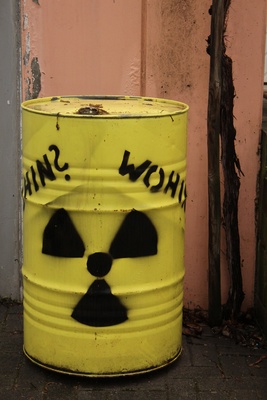Some systems for removing gaseous waste are designed to retain the fission and activation gasses for radioactive decay to extremely low levels prior to release. The methods in use in the cryogenic distillation process are costly and dangerous due to the volatility of the oxidizing agents. However, the new research found that by working at ambient temperatures, the new material had great potential for making the recycling process easier and less costly.
Appearing in Nature Communications, the research is a collaboration between experimentalists and computer modelers investigating the characteristics of materials called metal-organic frameworks. The MOFs are compounds made up of metal ions or clusters, and an organic molecule called a linker or ligand. The choice of metal and ligand determine the properties of the MOF.
“This is a great example of computer-inspired material discovery,” said materials scientist Praveen Thallapally of the Department of Energy’s Pacific Northwest National Laboratory in the US. “Usually, the experimental results are more realistic than computational ones. This time, the computer modeling showed us something the experiments weren’t telling us,” said Mr. Thallapally.
The radioactive gasses xenon and krypton arise during the reprocessing of nuclear waste. Mr. Thallapally, along with other researchers, have been studying MOFs that could potentially trap these gases.
The MOFs have very tiny pores. The pores are so small that only a single molecule can fit inside each pore. The team also had to take into account that one gas species might have a higher affinity for the pore walls than another gas species. With this in mind, the team was able to utilize the metal-organic frameworks to separate the gasses using selective absorption.
Two of the researchers, along with computational scientists, screened 125,000 possible MOFs for their ability to trap the gasses in order to find the best MOFs for capturing and storing xenon and krypton gasses.
They found that SBMOF-1 was the MOF that best-trapped xenon. They also found that MBMOF-1 would also capture krypton, but only in the absence of xenon. This means that during actual separations, operators would pass the gas streams through SBMOF-1 twice to capture both gasses.
They were able to identify the MOF that best-trapped xenon, SBMOF-1. They found that MBMOF-1 would also capture krypton, but only in the absence of xenon. This means that during actual separations, operators would pass the gas streams through SBMOF-1 twice to capture both gasses.
The research team is looking to conduct further using MOFs to see if they might also be able to capture other noble gasses such as radon.








